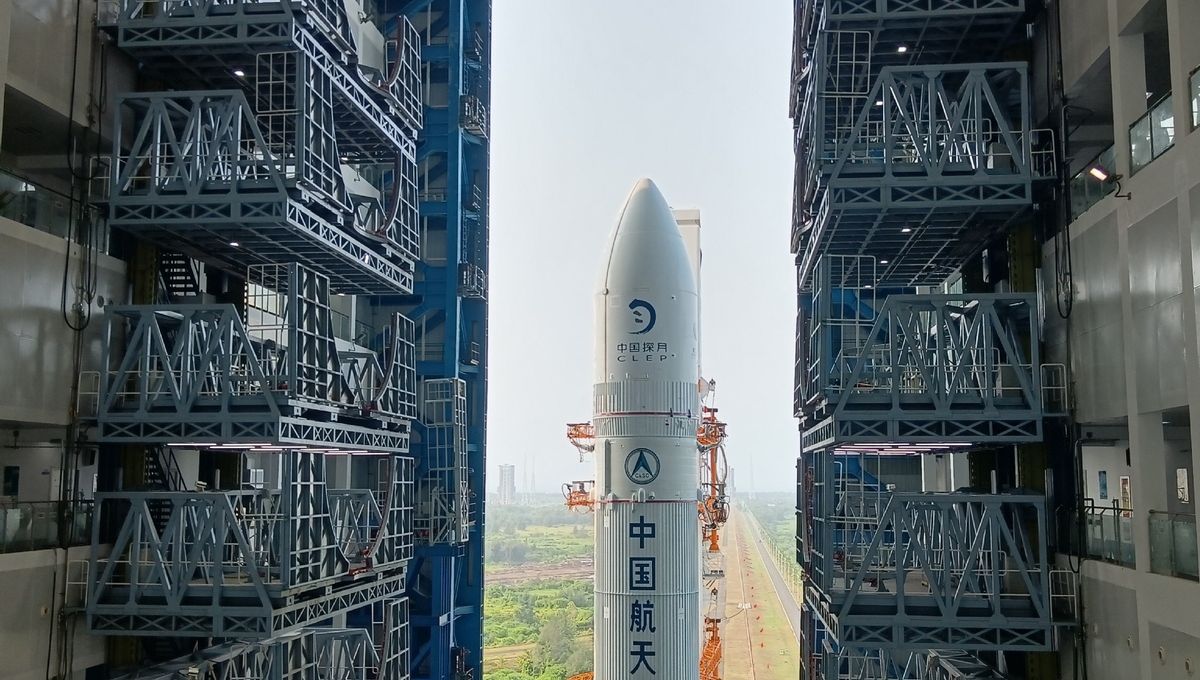
On May 3, China launched Chang’e 6, its latest mission to the Moon. Similar to its predecessor, it is a sample retrieval mission, expected to collect up to 2 kilograms (4.4 pounds) of lunar material from the far side of the Moon, the portion that is always facing away from Earth. The whole mission is expected to last 53 days.
China has already broken records on the far side by becoming the first and only nation to soft-land there with Chang’e 4 in 2019. That mission landed in the Von Kármán crater, which is 180 kilometers (110 miles) across and sits within the South Pole-Aitken Basin. Chang’e 6 is targeting another area of the basin: the Apollo crater, which is three times as wide as the Von Kármán.
The interest in this area lies in the distant past of the Moon. Underneath this region, there is a massive structure, potentially part of the colossal object that slammed into the Moon and created the basin 4 billion years ago. The jackpot would be to find portions of the lunar mantle and bring them back to Earth.
In an attempt to achieve this, Chang’e 6 is equipped with a scoop to collect soil and rocks from the surface, as well as a drill to collect subsurface samples. An ascent vehicle will launch the samples into orbit, where it will rendezvous with an orbiter and come back to Earth.
That is not the only focus of the mission, however. The lander and orbiter include scientific payloads from other countries too, which aim to understand dust and outgassing on the Moon, studying lunar magnetism, among other goals.
Chang’e 6 is the third generation of lunar missions from China. It will be followed by Chang’e 7 in 2026 and Chang’e 8 in 2028, which will land at the lunar South Pole – an area earmarked for future human exploration – and they will demonstrate the ability to construct a robotic research station on the Moon. This will be an important step ahead of the expected Chinese crewed landing on the Moon in the 2030s.
In the US, China’s plans are being seen with increased anxiety. On April 17, the House Appropriations Subcommittee on Commerce, Justice, Science, and Related Agencies held a hearing about the NASA Budget for 2025. Both the chair, representative Harold Rogers (R-KY), and NASA Administrator Bill Nelson made reference to a new space race.
“The National Aeronautics and Space Administration was founded in 1958 in response to the so-called Space Race with the Soviet Union to land the first man on the Moon. Today we find ourselves in yet another space race, this time with China,” Rogers stated during the hearing.
“We are in a race,” Nelson replied to a question from Rogers on Chinese plans. “The latest date they’ve said they’re going to land [on the moon] is 2030 but that keeps moving up.”
Nelson also said that he believes that the Chinese civilian space program is actually a military program. The comments have been seen as venting a frustration about the comparatively limited budget NASA operates. Others have considered Nelson’s comments as coming across as hypocritical given NASA’s many links to the military-industrial complex and the Department of Defense.
China appears to be willing to invest what is needed in space. In the US, NASA’s budget requested for 2025 is the same as it was in 2023 and 2024. Totaling $25,383,700,000 or 0.34 percent of the federal budget, the request has disappointed many, as it showed the shutting down of the operation of the Chandra X-ray Observatory.
Source Link: China Launches Mission To Far Side Of The Moon As US Claims A New Space Race Has Begun